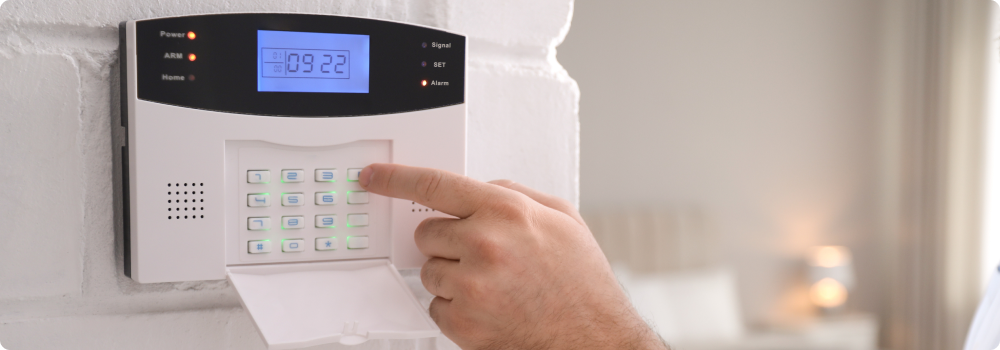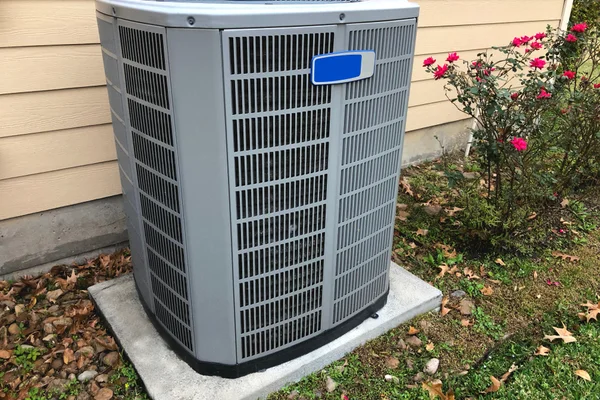
1. Thermostat
Your HVAC thermostat helps you regulate the temperature inside your home. Simply set the device to your desired temperature, and your AC will work to cool the interior of your home down to that level. Most thermostats these days are digital, but the old-fashioned dial kinds are still around.
Pro Tip: A programmable thermostat is a good option if you spend most of the day out of the house and want to save on heating and cooling. Simply set the thermostat to higher (in the summer) or lower (in the winter) for the hours you’re away. Don’t set your thermostat below 55°F in the winter, though, as you risk your pipes freezing if it gets too cold inside your house.
You can get a smart thermostat. Smart thermostats are also programmable, but they have the additional feature of learning your family’s activity levels and living patterns over time, so they can adjust the temperature in your home automatically to suit your lifestyle. You can also adjust your thermostat setting remotely from your smartphone, so if your routine varies, you can still come home to a nice, cool house.
Check out our Smart Home & Tech Installation Services to see how American Home Shield® members can get in-home and tech installation and support.
2. Compressor
The compressor is one of the parts of an air conditioning system located in the unit outside your home, along with the:
- condenser coil
- condenser fan
- AC contactor
- AC capacitor
- a few other essential parts of your AC unit
The compressor is located inside the unit, where it collects heat from the refrigerant and disperses it through the condenser coils, which you can see on the outside of the unit.
The refrigerant, which can exist as both a gas and a liquid, heats up inside your house, becoming a gas. Then it flows through the compressor, where it is turned into a liquid and the heat is released outdoors. A fan on the top of the unit helps with heat dispersal.
It’s also necessary to keep your AC compressor clear of debris and any structures designed to hide the unit so heat can dissipate effectively.

3. Condenser Coil
You can see the condenser coil on the exterior of your outdoor unit. It’s made up of tiny metal fins. Pipes carrying heated refrigerant gas travel through the condenser coil after leaving the compressor and release their heat. Then the refrigerant travels back into the house to the evaporator.
To optimize your system’s functioning, you must clean your condenser coil regularly so air can flow through the fins efficiently.
Pro Tip: How frequently you’ll need to clean your coil will depend on how dirty it gets. If you’re in an area with cottonwood trees, for example, you may need to clean it multiple times a year to remove the cotton. At minimum, you should hose off your condenser coil once a year.
4. Evaporator
The evaporator will probably be inside your house near the furnace. The refrigerant travels through the evaporator in a narrow pipe. It cools off the air around it and carries heat from inside your home back outside to the condenser coil.
As we mentioned previously, refrigerant exists as a high-pressure gas coming into this component, but it’s transformed into a low-pressure liquid as it travels through the evaporator. It then emerges from the evaporator in the form of a gas and travels to the compressor, where it will be compressed again.
5. Air Handler and Blower Unit
The air handler and blower unit draw air into the system, making them two of the most important HVAC system components. They also disperse warm air outside through the condenser coil and cool air inside through your duct system.
While some people use the terms interchangeably, a blower unit and an air handler are not the same thing. The blower unit is a component of the air handler, along with filters, dampers and mixing chambers. The air handler and blower unit are located inside near your furnace, and they work to move air through the furnace, too. When something goes wrong with your air handler or blower, such as a blower fan failure, air will stop moving through the system, and you’ll no longer feel it coming out of your vents at all.
Find More HVAC Support
When you’re struggling with common HVAC problems, American Home Shield is here to help. With HVAC coverage included in each of our home warranty plans, your family can remain comfortable all year long.
Plus, by getting a home warranty from us, you’ll get to take advantage of our seasonal AC tune-up service from an approved, qualified Pro.
And while you’re at it, get familiar with what to expect during an AC service call so you get the best results possible.





